The majority of the 3,686 known species of snakes lay eggs.
Knowing which snakes lay eggs is important for several reasons. You may want to breed your snake, or you may need to identify a snake that has laid eggs near your house.
The most popular pet snakes that lay eggs are:
- Ball Pythons.
- Corn Snakes.
- Kingsnakes.
- Copperheads.
So why do some snakes lay eggs, but not others? Continue reading to find out and see a full list of snakes that are egg-layers (i.e. oviparous).
Do Snakes Lay Eggs?
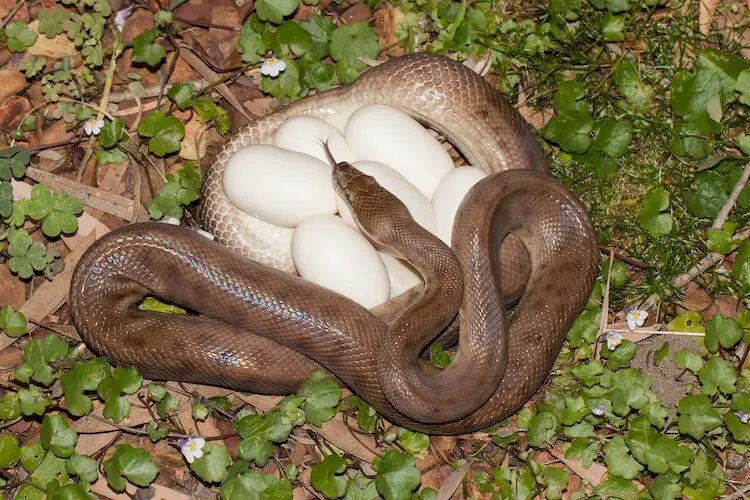
Many first-time keepers ask, “do snakes lay eggs or have babies live?”
The answer is, the majority of snakes lay eggs. Egg laying snakes are known as oviparous.
Once they find out that snakes do lay eggs, their next question normally is, “do all snakes lay eggs?”
The answer in short is no.
Most snakes lay eggs, but there are some families of snakes that do not. Some snakes lay eggs and others give birth to live young.
At What Age Do Snakes Lay Eggs?
Snakes can only reproduce once they reach sexual maturity.
The age a snake reaches sexual maturity can vary depending on nutrition, size, health and species. Most snakes reach sexual maturity around two to three years old and live for 10 to 15 years.
Once the snake is mature, it is ready to reproduce and lay eggs.
Sometimes species take longer to reach sexual maturity if they are abnormally small or malnourished.
Studies have shown that some scales appear on male snakes near their anal region at the time sexual maturity starts.
An indicator of sexual maturity for females is the presence of a cloacal capsule that can be seen from the ventral surface.
Where Do Snakes Lay Eggs?
A snake is ready to lay her eggs two weeks to a month after copulation and fertilization.
She must then decide where to lay her eggs.
Snakes pay less attention to where they lay their eggs when compared with other reptiles. Most of them do not bury their eggs, but some species such as Pine Snakes dig tunnels in sandy areas to hide their clutches.
Most species use natural cavities to lay their eggs. This can include:
- Mounds or burrows.
- Under logs.
- Surrounded by moist soil.
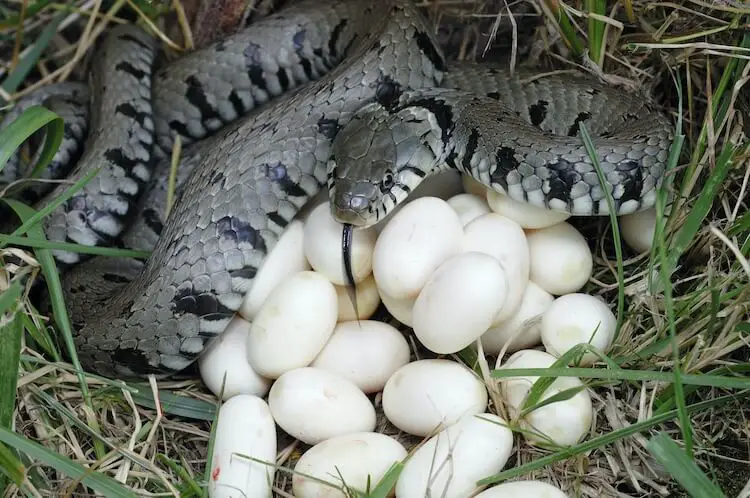
How Many Eggs Do Snakes Lay?
The number of eggs per clutch highly depends on the species of snake.
Ball Pythons lay one to eleven eggs per clutch. Corn Snakes can lay 10 to 30.
Some lay just one or two eggs and other species can lay up to 100 per clutch.
Normally the bigger the snake the larger the clutch.
When Do Snakes Lay Eggs?
The breeding season for snakes varies between species – similar to their clutch size and reproductive age.
In many species that live in the United States their breeding season occurs from May through August.
The breeding season usually occurs at a time of year where the snake is healthy and active.
Environmental factors (e.g. temperature, sunlight and rainfall) heavily influence when snakes lay eggs. Snakes want to breed when it is warm enough and when food is readily available.
Species that live in naturally tropical regions breed year-round. Species that hibernate in cooler climates breed in the spring so that their eggs hatch in the summer when it is warm.
When fertilization occurs the egg’s shell starts to develop in the snake’s uterus. Her glands secrete fibers that help develop a shell.
How Do Snakes Lay Eggs?
When it is time for a snake to lay her eggs she will display many twitch-like movements and breathe rapidly. She may also flick her tongue.
Eggs are expelled from the uterus through uterine and cloacal contractions. A snake will lift her tail and lay eggs!
She will lay all of her eggs in a pile and they stick to each other.
Snakes lay either soft eggs (i.e. pliable-shelled) or hard eggs (i.e. rigid-shelled). Pliable shells are softer and the egg can rapidly gain or lose mass due to the exchange of water with the surrounding environment.
Most species lay soft shelled eggs.
Many mothers do not stay with their eggs after oviposition. Only some species curl around their eggs to keep them warm.
Do Snakes Hatch From Eggs?
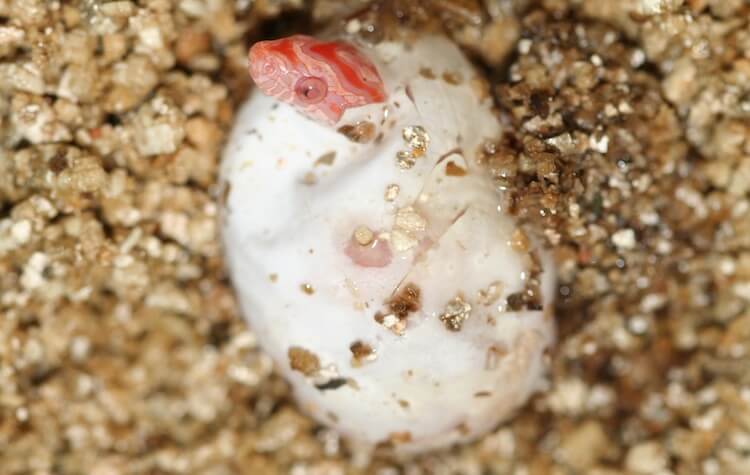
Yes. Many snakes hatch from eggs. The length of time it takes for a snake to hatch from its egg depends on the species. For most species it is between one to three months.
Now you know that snakes lay eggs, you may be wondering how snakes hatch from eggs.
When neonates are developing they use their heartbeats to communicate with each other. They use this communication method to synchronize their metabolisms and hatching times.
This means all of the eggs in a clutch will hatch at approximately the same time (within two days of each other).
Snakes have an egg tooth that they use to start to poke themselves through the shell and hatch!
A snake uses this tooth to rupture the embryonic membranes inside the egg and then the leathery shell.
Which Snakes Lay Eggs?
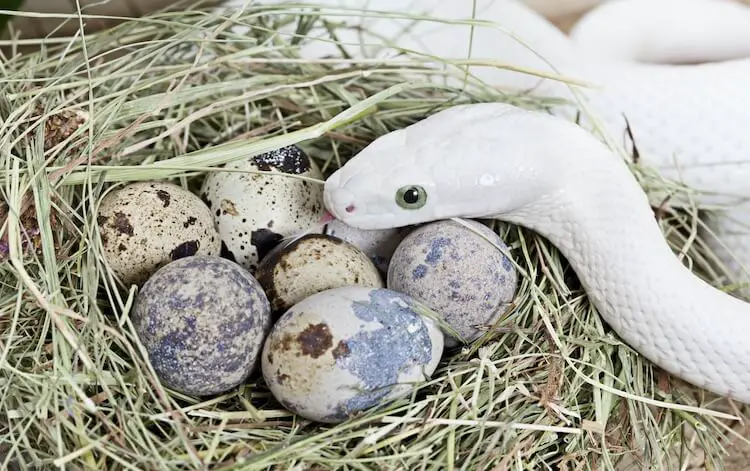
Snakes that lay eggs are called oviparous.
Most snakes develop eggs inside of them and eventually lay those eggs. The eggs will then incubate from atmospheric heat or the mother’s body heat from. She may leave the pile alone or may curl herself around it to keep the clutch warm. The babies hatch sometime later.
When a snake lays eggs like this they are known as oviparous.
The root “ov” or “ovo” means egg and “parous” means bearing of offspring.
The two largest snake families (i.e. colubrids and elapids) are mostly oviparous:
A to Z List Of Oviparous Snakes
- Adders
- Banded Snakes
- Black Collared Snake
- Broad-Headed Snakes
- Brown Snakes and Redbelly Snakes
- Burrowing Snakes
- Cat-Eyed Snakes and Cat Snakes
- Cobras
- Coffee Snakes
- Copperheads
- Coral Snakes
- Corn Snakes
- Crowned Snakes
- Earth Snakes
- Egg-Eating Snakes
- False Coral Snakes
- Fishing or Shadow Snakes
- Flathead Snakes
- Flying Snakes
- Forest Snakes
- Gopher, Pine, and Bullsnakes
- Grass Snakes
- Green Snakes
- Ground Snakes
- Harlequin Snakes
- Hensel’s Snake
- Hog-Nosed Snakes
- Hooded Snakes
- Hook-Nosed Snakes
- Ivory-Naped Snakes
- Keelback Snakes
- Kingsnakes
- Kirtand’s Snake
- Kukri Snakes
- Lined Snakes
- Long-Nosed Snakes
- Lyre Snakes
- Mambas
- Mountain Snakes
- Mud Snakes
- Musseranas
- Neckband Snakes
- Night Snakes
- Ornamental Snakes
- Pampas Snakes
- Parrot Snakes
- Patch-Nosed Snakes
- Pythons
- Racers
- Rainbow Snake
- Rat Snakes
- Reed Snakes
- Ring Necked Snakes
- Rough-Sided Snake
- Sea Kraits (of the Laticauda genus)
- Sharp-, Short- and Long-Tailed Snakes
- Shovel-Nosed Snakes
- Slender or Worm-Eating Snakes
- Small-Eyed Snakes
- Smooth Snakes
- Snail-Eater Snakes
- Striped Snakes
- Taipans
- Tiger Snakes
- Tree Snakes and Vine Snakes
- Wagler’s Snake
- Whip Snakes
- Wolf Snakes
- Worm Snakes
Viviparous and Ovoviviparous Snakes
If a snake does not lay eggs, how does it give birth?
What happens when an egg does not develop? Or when eggs are not laid at all?
There are two other methods of birthing:
- Viviparous.
Viviparous snakes do not form eggs at all.
These snakes develop inside their mother without a shell and are then delivered live. The mother will carry the embryos until birth.
- Ovoviviparous.
Ovoviviparous snakes do form eggs! They just do not lay them.
Animals that are ovoviviparous form eggs in their womb, but babies hatch from these eggs before they are laid – so babies are delivered live.
| Viviparous snakes | Ovoviviparous snakes |
|---|---|
| Anacondas | Boas |
| Garter Snakes | Rattlesnakes |
Live-bearing species evolved from egg-laying snakes over a long period of time.
There are some distinct advantages for none egg-laying snakes:
- They do not have to nest or find a place to lay their eggs.
- Snakes in colder environments can keep their young warmer as they develop.
- Viviparous snakes can also thermoregulate their bodies better than egg laying snakes
The birthing process for snakes that do not lay eggs is similar to those that do.
Gravid mothers will be very restless for four to six hours before birth. They will occasionally have contortions as they birth their young.
Neonates are usually born folded so their mid-bodies come out first.
Myths About Snake Birth
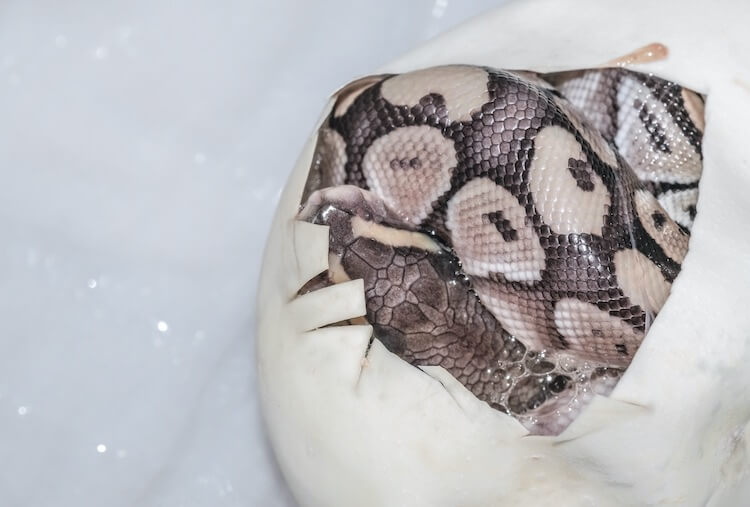
There are some popular misconceptions about how snakes are born.
Some people believe that snakes do not come out to breed until after the first thunderstorm of spring. This is not true. The truth is warmer temperatures and a snakes’ inner clock tell it to come out of hibernation and mate.
Another myth is that venomous and nonvenomous snakes can interbreed to create a hybrid. This is not true. Venomous and nonvenomous snakes are different species. None of these species can breed successfully and create fertile, viable offspring.
Finally, some people believe that snakes give birth to their young through their mouths. Again, not true. The truth is that it is very common for larger snakes to eat smaller snakes.
Summary
There is more to snake births than you first thought.
Most species of snakes lay eggs. This means they are oviparous.
Snake eggs feel like leather and can either be pliable or rigid. Rigid shells are generally harder, but most snakes lay pliable shells. When it is time to hatch, hatchlings will use their egg tooth to break through the shell.
If a snake does not lay eggs it is either viviparous or ovoviviparous.
Viviparous snakes do not form eggs. The babies develop in membranes inside the mother and are then born live – the same way humans are born.
Ovoviviparous snakes form shelled eggs with an embryo inside. However, neonates break through the shell before they are born.
The world of snake eggs and reproduction is fascinating and the knowledge can be used to breed your own morph!
Have you ever watched a snake hatch? Tell us your story in the comments below.

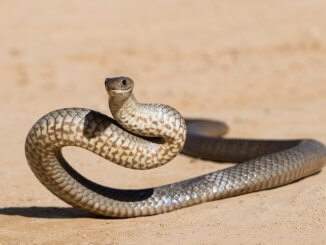
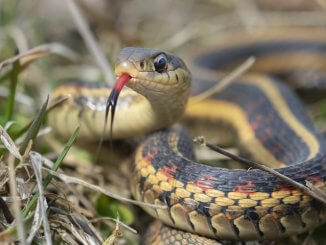
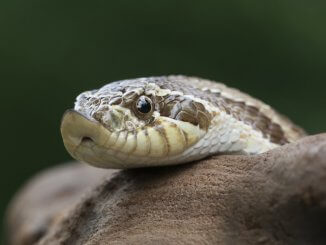
Concise, logical order and informative. Thank you
this is useful, thank you kindly